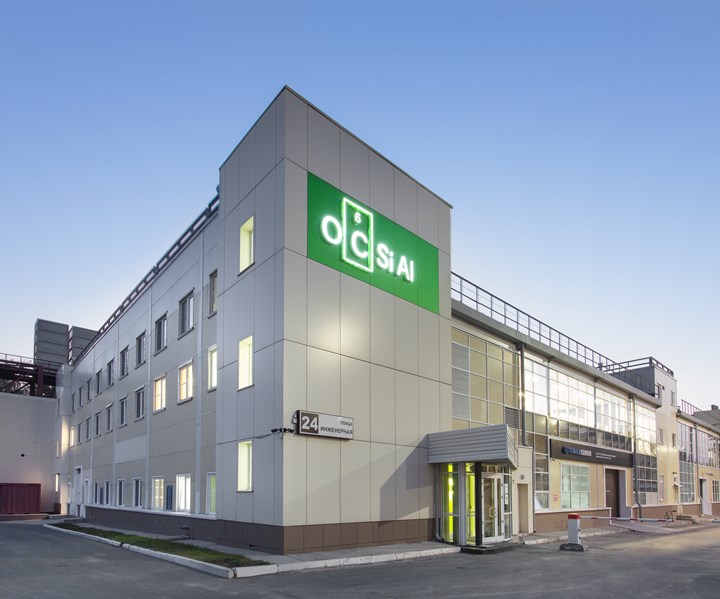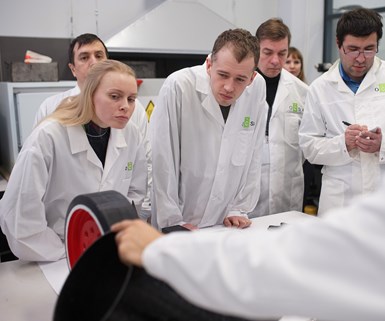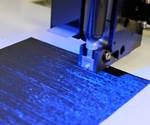OCSiAl achieves graphene nanotube production capacity of 75 metric tonnes per year
The company’s recently completed Graphetron 50 facility in Russia has a production capacity of 50 metric tonnes per year.

A grand opening ceremony was held for the new facility in Novosibirsk Akademgorodok, Russia on Feb. 11, 2020. Source | OCSiAl
Global graphene nanotube manufacturer OCSiAl (Leudelange, Luxembourg and Columbus, Ohio, U.S.) has announced the launch of its second synthesis facility for graphene nanotubes, also known as single-wall carbon nanotubes.
The company reports that its recently completed Graphetron 50 facility in Novosibirsk Akademgorodok, Russia, which has a production capacity of 50 metric tonnes per year, is currently the world’s largest plant for graphene nanotube production. Commissioned in 2019 in test mode, Graphetron 50 has now reached its planned annual production capacity. According to OCSiAl, the company now accounts for more than 90% of the global production capacity for graphene nanotubes.
The first industrial-scale batch of graphene nanotubes – 1.2 metric tonnes – was synthesized by OCSiAl in 2015. The total combined annual capacity of the two OCSiAl production units has now reached 75 metric tonnes of nanotubes, which are marketed under the TUBALL brand name.

Source | OCSiAl
In 2017, OCSiAl signed a Memorandum of Understanding to construct a graphene nanotube factory in Luxembourg. The commissioning of the first production line with an annual capacity of up to 100 metric tonnes per year is scheduled for 2023.
To provide even better technical support for its customers in regions with a strong OCSiAl presence, the company has launched its two TUBALL Centers in Russia and China. These Centers also focus on developing new nanotechnology breakthroughs. For its European customers, OCSiAl will launch a third TUBALL Center in Luxembourg in 2020.
“OCSiAl's annual production capacity has now reached 75 tonnes of graphene nanotubes. The growing market demand is closely related to the ongoing revolution in the electric vehicle field. If we take into account the official plans of the largest global car manufacturers, just the Li-ion batteries for them would require 250 tonnes of graphene nanotubes in 2025,” says Yury Koropachinskiy, president of OCSiAl.
Related Content
-
Combining multifunctional thermoplastic composites, additive manufacturing for next-gen airframe structures
The DOMMINIO project combines AFP with 3D printed gyroid cores, embedded SHM sensors and smart materials for induction-driven disassembly of parts at end of life.
-
Welding is not bonding
Discussion of the issues in our understanding of thermoplastic composite welded structures and certification of the latest materials and welding technologies for future airframes.
-
Revisiting the OceanGate Titan disaster
A year has passed since the tragic loss of the Titan submersible that claimed the lives of five people. What lessons have been learned from the disaster?
.jpg;width=70;height=70;mode=crop)





